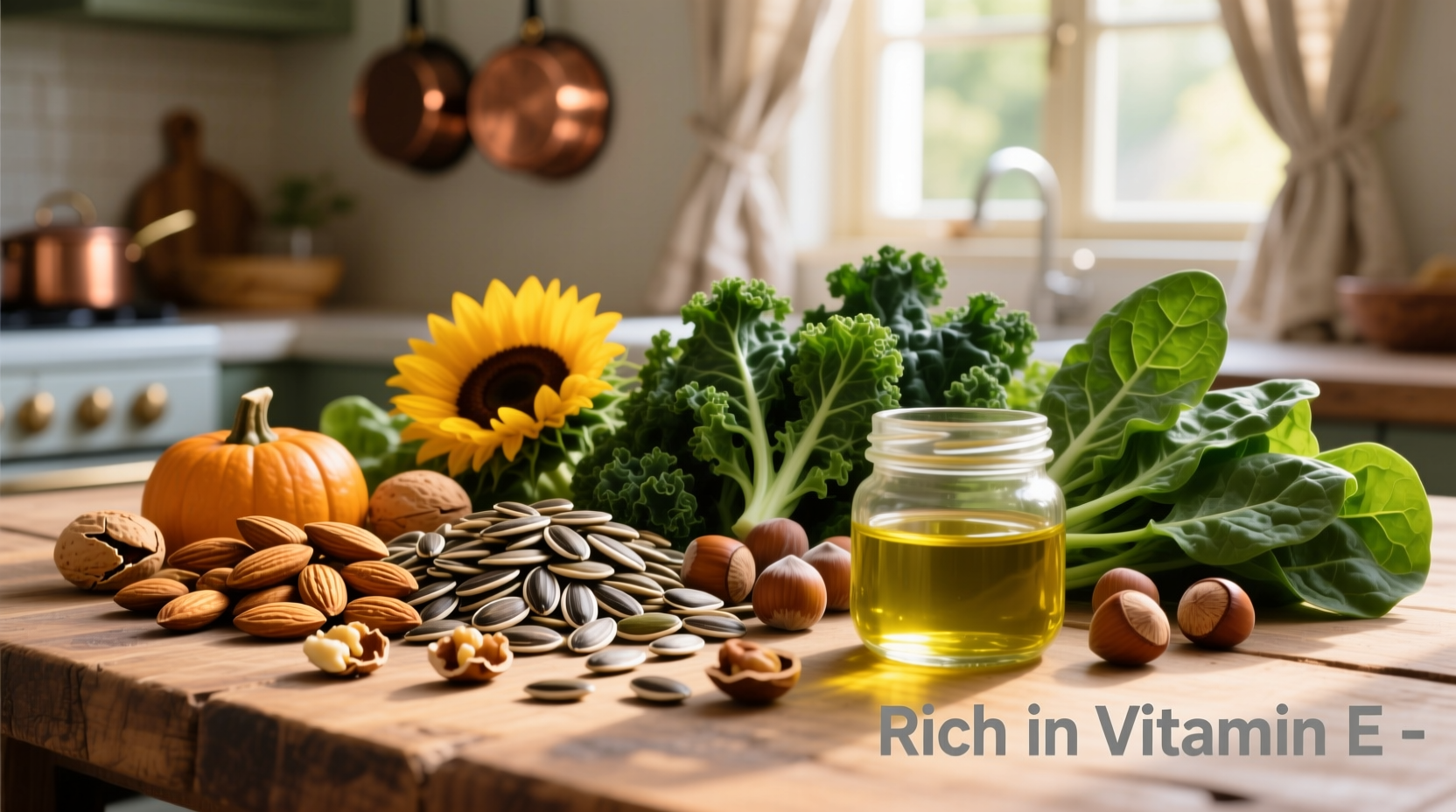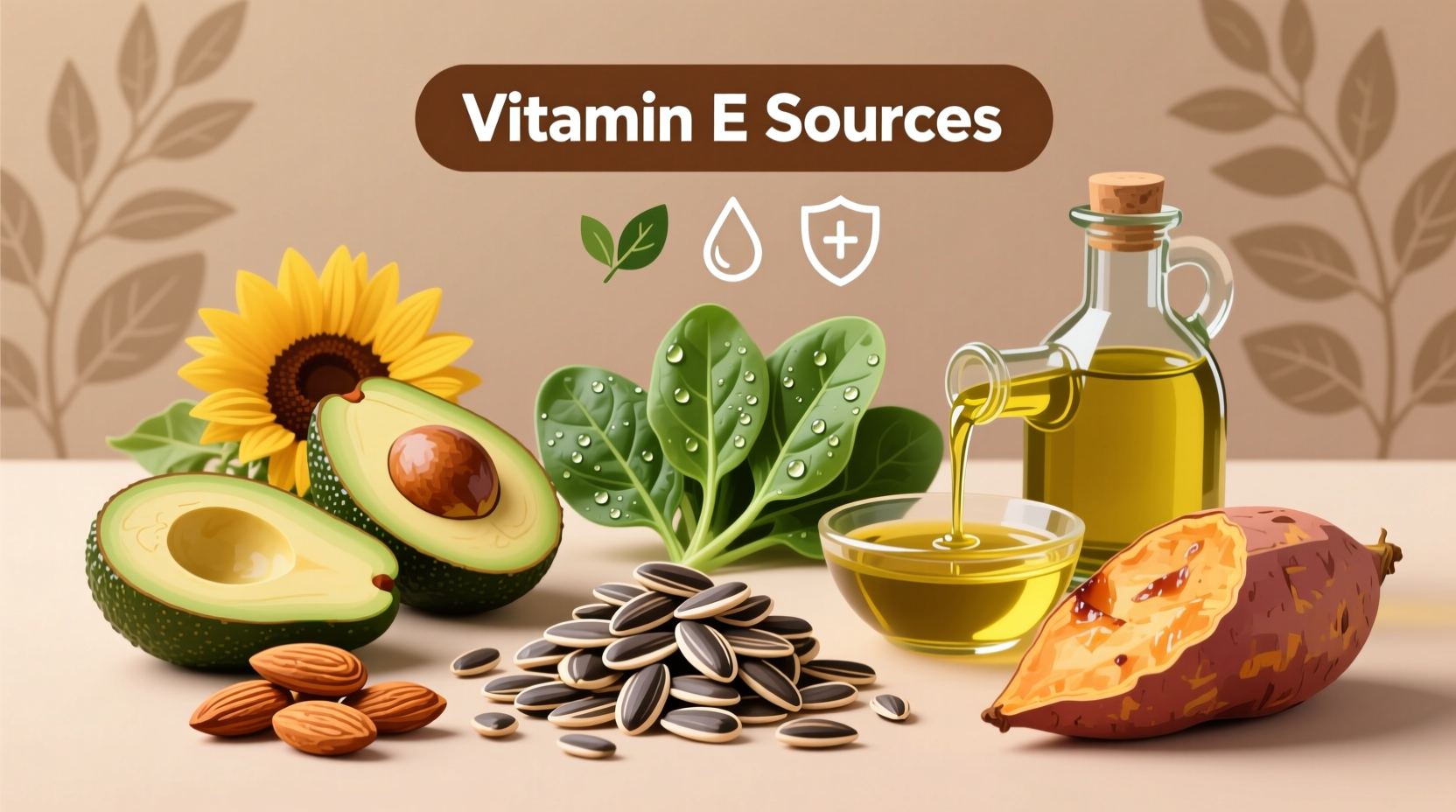Top vitamin E-rich foods include sunflower seeds (33.4mg per ounce), almonds (7.4mg per ounce), hazelnuts (4.3mg per ounce), spinach (3.7mg per cooked cup), and avocado (4.2mg per whole fruit). These natural sources provide the alpha-tocopherol form of vitamin E your body needs for optimal antioxidant protection, skin health, and immune function.
Discover exactly which foods deliver the most vitamin E per serving and how to incorporate them into your daily meals. This guide reveals science-backed sources that meet or exceed the recommended daily allowance (RDA) of 15mg for adults, helping you boost your antioxidant intake through delicious, everyday foods rather than supplements.
Why Vitamin E Matters for Your Health
Vitamin E isn't just one compound—it's a family of eight fat-soluble antioxidants, with alpha-tocopherol being the most biologically active form your body uses. According to the National Institutes of Health, this essential nutrient protects your cells from free radical damage, supports immune function, and helps widen blood vessels to prevent clotting. NIH research shows that consistent dietary intake of vitamin E correlates with reduced risk of chronic diseases, particularly when obtained from whole foods rather than supplements.
Top Food Sources Ranked by Vitamin E Content
Understanding exactly how much vitamin E you're getting requires precise measurements. The USDA FoodData Central database provides verified nutrient profiles for common foods. Here's what their latest analysis reveals:
| Food (1 serving) | Vitamin E (mg) | % Daily Value | Best Preparation Method |
|---|---|---|---|
| Sunflower seeds (1 oz) | 33.4 | 223% | Dry roasted, unsalted |
| Almonds (1 oz) | 7.4 | 49% | Raw or lightly toasted |
| Safflower oil (1 tbsp) | 4.6 | 31% | Use unheated in dressings |
| Spinach (1 cooked cup) | 3.7 | 25% | Lightly steamed |
| Avocado (1 whole) | 4.2 | 28% | Raw in salads or smoothies |
This comparison reveals an important context boundary: processed versions of these foods often contain significantly less vitamin E. For example, commercial almond butter typically loses 20-30% of its vitamin E content during processing compared to raw almonds, according to research published in the Journal of Food Science.
Maximizing Vitamin E Absorption from Your Meals
Vitamin E is fat-soluble, meaning your body absorbs it best when consumed with dietary fats. This explains why nutritionists recommend pairing vitamin E-rich spinach with healthy fats like olive oil. A 2020 study in the American Journal of Clinical Nutrition demonstrated that adding just 30g of avocado to a salad increased carotenoid absorption by 8.4 times and significantly boosted vitamin E utilization.
Avoid these common preparation mistakes that destroy vitamin E:
- Excessive heating of oils (vitamin E degrades above 320°F/160°C)
- Long-term storage of nuts and seeds (exposure to light and air reduces potency)
- Peeling almonds (the highest concentration is in the skin)

Practical Daily Integration Strategies
Building a vitamin E-rich diet doesn't require drastic changes. Start with these simple, evidence-based approaches:
Morning Boost
Add 1 tablespoon of wheat germ (20% DV of vitamin E) to your breakfast smoothie or oatmeal. This simple addition provides nearly one-third of your daily requirement without altering flavor significantly.
Lunch Solutions
Create a spinach salad with sunflower seeds, avocado slices, and a safflower oil dressing. This combination delivers over 100% of your daily vitamin E needs while enhancing absorption through strategic fat pairing.
Smart Snacking
Keep a small container of mixed almonds and hazelnuts at your desk. A single ounce serving provides nearly half your daily requirement and satisfies cravings with healthy fats and fiber.
Special Considerations for Different Needs
Certain populations have increased vitamin E requirements:
- Vegetarians and vegans: Focus on plant-based sources like nuts, seeds, and greens since animal products contain minimal vitamin E
- Older adults: Over age 50 may need slightly higher intake due to reduced absorption efficiency
- People with fat malabsorption disorders: May require medical supervision as their bodies struggle to absorb fat-soluble vitamins
The Linus Pauling Institute notes that while vitamin E toxicity from food sources is virtually impossible, those taking blood thinners should consult their physician before significantly increasing vitamin E intake, as it can enhance anticoagulant effects.
When Supplements Might Be Necessary
For most people, dietary sources provide sufficient vitamin E. However, the Mayo Clinic identifies specific situations where supplementation under medical supervision may be warranted:
- Individuals with genetic disorders affecting fat absorption
- People with cystic fibrosis or Crohn's disease
- Those with severe malnutrition
Remember that natural vitamin E from foods comes with complementary nutrients that enhance its effectiveness—a benefit supplements can't replicate.











 浙公网安备
33010002000092号
浙公网安备
33010002000092号 浙B2-20120091-4
浙B2-20120091-4